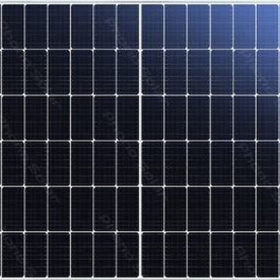Zinc miner goes solar as African Development Bank pushes off-grid finance
A business based at a Namibian mine has signed a 15-year power purchase agreement which will back the construction of a 5.4MW solar project. Elsewhere, the AfDB wants to roll-out solar panels to provide electricity access to six million people across six nations over the next six years.
Phono Solar introduces 560W TOPCon solar module with 21.72% efficiency
The panel is part of the company’s new TOPCon module series, which also includes a 430W product with an efficiency of 21.99%.
Chinese PV Industry Brief: Daqo could make 125,000 tons of poly this year
Also, heterojunction module manufacturer Huasun has begun assembling production lines at its new 2GW factory and Trina Solar has agreed to buy 290 million wafers from Beijing Jingyuntong Technology.
Plug & play electrolyzer for green hydrogen production from Germany
Developed by Germany-based hydrogen specialist Enapter, the EL 4.0 electrolyzer is based on a patented anion exchange membrane (AEM) technology. Commercial production is currently being prepared at the company’s Italian plant and the first shipments should be made in the summer.
Solar-powered self compacting garbage can
The city government of Florence, in Italy, is installing solar-powered, self-compacting garbage cans that are claimed to reduce emptying operations by 94% compared to traditional bins. The devices were provided by Korean manufacturer Ecube Labs.
‘This is wartime and wartime requires war economy measures’
In a chat with pv magazine, Christian Breyer – Professor of Solar Economy at Finland’s Lappeenranta University of Technology – explains which consequences the war in Ukraine may have on Europe’s energy landscape. According to him, only an unprecedented development of renewable energies, heat pumps and storage may help address the current energy crisis.
Kaneka raises solar module prices by 20%
The Japanese manufacturer blames increasing wafer prices and logistics costs for its decision.
Semi-transparent perovskite solar cell with 13% efficiency, 27% transparency
Developed for applications in BIPV, vehicle-integrated solar and smart glasses, the solar cell was built with an ultra-thin, semi-transparent, triple-cation perovskite film and gold nanorods (Au NRs). The device achieved an open-circuit voltage of 1097.1mV, a short-circuit current of 17.11mA/cm2 and a fill factor of 73.12%.
Akuo speaks out on recent fire accident at its 17MW floating PV plant in France
Nearly a month after the fire occurred at the O’Mega 1 floating power plant in Piolenc, Akuo has drawn the first conclusions from the incident. pv magazine was able to visit the site to observe the damage, gather lessons, and see the arrangements put in place by the site managers.
India installed 10GW of solar in 2021
India recorded its highest-ever annual solar capacity additions in 2021, despite the ongoing rise of component costs.









